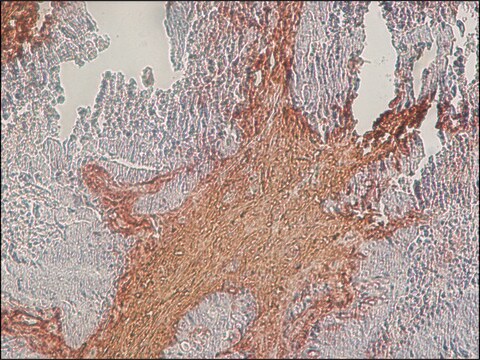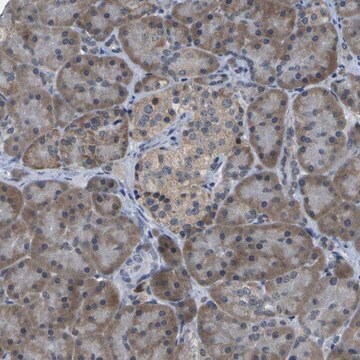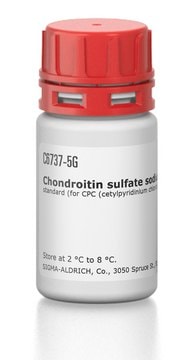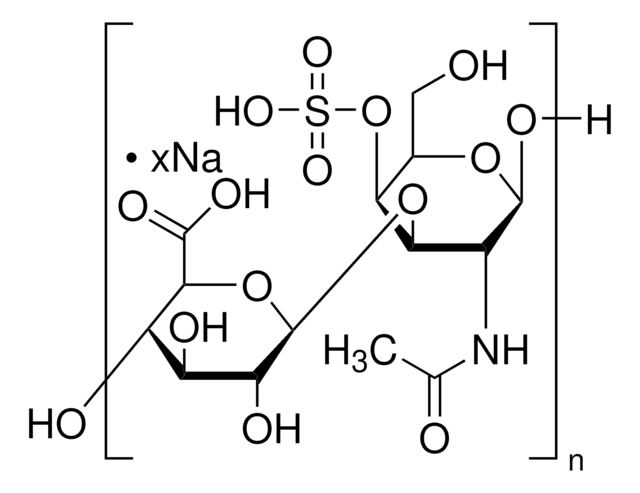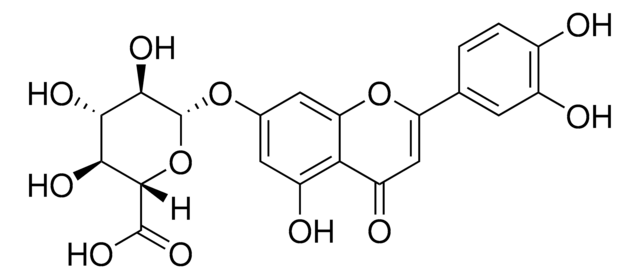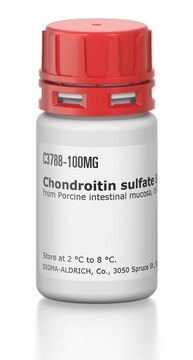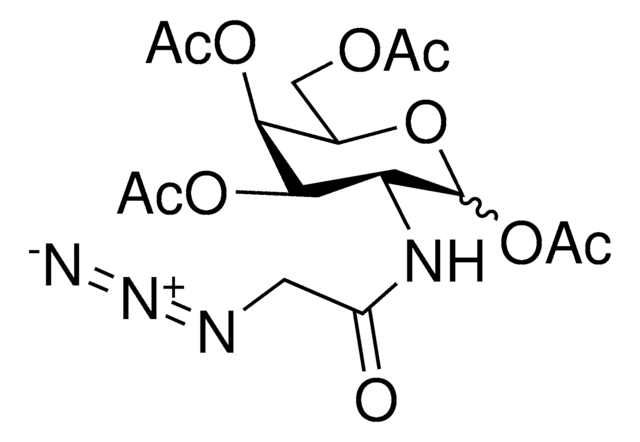MABT1324
Anti-Keratan sulfate Antibody, clone 373E1
Synonim(y):
KS, Keratosulfate
About This Item
Polecane produkty
pochodzenie biologiczne
mouse
Poziom jakości
forma przeciwciała
purified antibody
rodzaj przeciwciała
primary antibodies
klon
373E1, monoclonal
masa cząsteczkowa
observed mol wt ~N/A kDa
oczyszczone przez
affinity chromatography
reaktywność gatunkowa
chicken, human
reaktywność gatunkowa (przewidywana na podstawie homologii)
vertebrates
opakowanie
antibody small pack of 100
metody
ELISA: suitable
immunohistochemistry: suitable
immunoprecipitation (IP): suitable
western blot: suitable
izotyp
IgMκ
numer dostępu Protein ID
numer dostępu UniProt
temp. przechowywania
-10 to -25°C
Specyficzność
Immunogen
Zastosowanie
Evaluated by Immunohistochemistry (Paraffin) in Human cartilage tissue sections.
Immunohistochemistry (Paraffin) Analysis: A 1:50 dilution of this antibody detected Keratan Sulfate in human cartilage tissue sections.
Tested Applications
Western Blotting Analysis: A representative lot detected Keratan Sulfate in Western Blotting application (Magro, G., et al. (2003). Am J Pathol. 163(1):183-96).
Immunoprecipitation Analysis: A representative lot immunoprecipitated Keratan Sulfate in Immunoprecipitation application (Magro, G., et al. (2003). Am J Pathol. 163(1):183-96).
Immunohistochemistry Applications: A representative lot detected Keratan Sulfate in Immunohistochemistry application (Magro, G., et al. (2003). Am J Pathol. 163(1):183-96).
ELISA Analysis: A representative lot detected Keratan Sulfate in ELISA application (Magro, G., et al. (2003). Am J Pathol. 163(1):183-96).
Note: Actual optimal working dilutions must be determined by end user as specimens, and experimental conditions may vary with the end user.
Opis wartości docelowych
Postać fizyczna
Rekonstytucja
Przechowywanie i stabilność
Inne uwagi
Oświadczenie o zrzeczeniu się odpowiedzialności
Nie możesz znaleźć właściwego produktu?
Wypróbuj nasz Narzędzie selektora produktów.
Kod klasy składowania
12 - Non Combustible Liquids
Klasa zagrożenia wodnego (WGK)
WGK 2
Temperatura zapłonu (°F)
Not applicable
Temperatura zapłonu (°C)
Not applicable
Certyfikaty analizy (CoA)
Poszukaj Certyfikaty analizy (CoA), wpisując numer partii/serii produktów. Numery serii i partii można znaleźć na etykiecie produktu po słowach „seria” lub „partia”.
Masz już ten produkt?
Dokumenty związane z niedawno zakupionymi produktami zostały zamieszczone w Bibliotece dokumentów.
Nasz zespół naukowców ma doświadczenie we wszystkich obszarach badań, w tym w naukach przyrodniczych, materiałoznawstwie, syntezie chemicznej, chromatografii, analityce i wielu innych dziedzinach.
Skontaktuj się z zespołem ds. pomocy technicznej